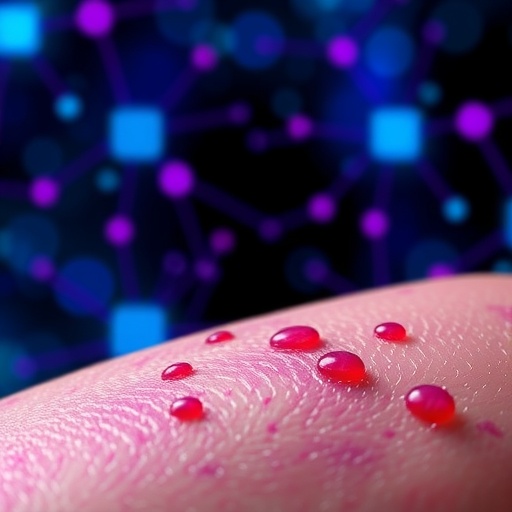In recent years, advancements in regenerative medicine have provided groundbreaking solutions to some of the most pressing challenges in healthcare. Among these challenges, effective skin wound healing remains a prominent concern, particularly in the context of chronic wounds, burns, and surgical repairs. A remarkable increase in the knowledge and technological capabilities has led to innovative strategies aimed at improving the healing process and enhancing patient outcomes. A recently published study by Mahajan, Soker, and Murphy delves into these progressive approaches, illustrating the transition from traditional allografts to engineered skin substitutes.
The study emphasizes the various methodologies available in regenerative medicine, which are instrumental for skin wound healing. Historically, skin wounds have often relied on allografts, tissues transplanted from donors. While effective in certain scenarios, the limitations of allografts are significant, such as the risk of graft rejection, restricted availability, and potential for infectious disease transmission. The authors highlight that this has catalyzed research into alternative solutions, particularly focusing on the engineering of skin substitutes that can mimic the complex architecture and functions of natural skin.
One of the key insights from the study is the detail surrounding the fabrication of engineered skin substitutes. These synthetic or bioengineered materials aim to replicate the structure and functionality of skin, thus facilitating cellular growth while providing a scaffold for tissue regeneration. Various techniques are being employed, including 3D bioprinting, which facilitates the precise layering of cells and extracellular matrix components, allowing for enhanced integration and functional restoration of skin.
Moreover, the authors discuss the role of biomaterials in developing these engineered substitutes. Natural polymers, like collagen, gelatin, and hyaluronic acid, are frequently utilized due to their biocompatibility and bioactivity. Such materials not only serve as physical scaffolds but also actively participate in promoting cellular behaviors that are crucial for wound healing. By optimizing these biomaterials, researchers can enhance the biological performance of engineered skin substitutes, therefore significantly improving their effectiveness.
Notably, the investigation into stem cell therapy has also gained momentum in the context of skin wound healing. Mesenchymal stem cells (MSCs) have emerged as a focal point in regenerative medicine due to their ability to differentiate into various cell types, including fibroblasts and keratinocytes, which are essential for skin repair. The authors point out that the application of MSCs within engineered skin substitutes can enhance healing rates and quality, accelerating the recovery process for patients with debilitating wounds.
An important aspect addressed in the findings is the role of growth factors and cytokines in mediating the healing process. These molecular signals play critical roles in modulating inflammation, promoting cell proliferation, and facilitating tissue remodeling. Innovations in delivering these biomolecules alongside engineered skin substitutes could enhance therapeutic efficacy, providing a much more holistic approach to wound care and management.
In evaluating current clinical applications, the paper highlights several noteworthy case studies that illustrate the successful integration of engineered skin substitutes into clinical practice. These real-world examples affirm the potential for significant advancements in the treatment of skin wounds that would ultimately improve patient quality of life. The authors advocate for further investigation and clinical trials to establish standardized protocols and efficacy benchmarks for these advanced solutions.
Additionally, the collaborative efforts across various scientific disciplines—such as materials science, molecular biology, and clinical medicine—are underscored as critical drivers of innovation in this area of research. The interdisciplinary approach fosters the design of robust solutions that are not only effective but also scalable and economically viable, making them suitable for widespread adoption in healthcare settings.
As the field of regenerative medicine continues to evolve, the authors stress the importance of ethical considerations in the development and application of new technologies. With the integration of engineered skin substitutes into clinical practice, it is imperative to establish guidelines that ensure patient safety, informed consent, and equitable access to these advanced therapies.
Ultimately, the exploration of regenerative medicine approaches for skin wound healing demonstrates a paradigm shift in how we approach tissue repair and regeneration. The transition from conventional allografts to sophisticated engineered substitutes signifies not only a technological leap but also a renewed commitment to enhancing patient care. The authors conclude that ongoing research and collaboration will be crucial in realizing the full potential of these strategies in combating chronic wounds and other skin-related ailments.
In summary, the study authored by Mahajan, Soker, and Murphy provides a comprehensive examination of the current and future landscape of skin wound healing approaches in regenerative medicine. The research’s emphasis on engineered skin substitutes represents a hopeful horizon not only for patients suffering from chronic wounds but also for the broader healthcare community dedicated to advancing medical science.
Maintaining a relentless focus on innovation, collaboration, and ethical practices within regenerative medicine could lead to transformative outcomes in skin wound healing. As we continue to uncover the potential of engineered solutions, the goal remains clear: to provide effective, safe, and accessible options for improving wound repair, thereby enhancing the quality of life for countless individuals.
Subject of Research: Regenerative medicine approaches for skin wound healing.
Article Title: Regenerative Medicine Approaches for Skin Wound Healing: from Allografts to Engineered Skin Substitutes.
Article References:
Mahajan, N., Soker, S. & Murphy, S.V. Regenerative Medicine Approaches for Skin Wound Healing: from Allografts to Engineered Skin Substitutes.
Curr Transpl Rep 11, 207–221 (2024). https://doi.org/10.1007/s40472-024-00453-5
Image Credits: AI Generated
DOI: 10.1007/s40472-024-00453-5
Keywords: regenerative medicine, skin wound healing, engineered skin substitutes, allografts, stem cells, biomaterials, growth factors.




